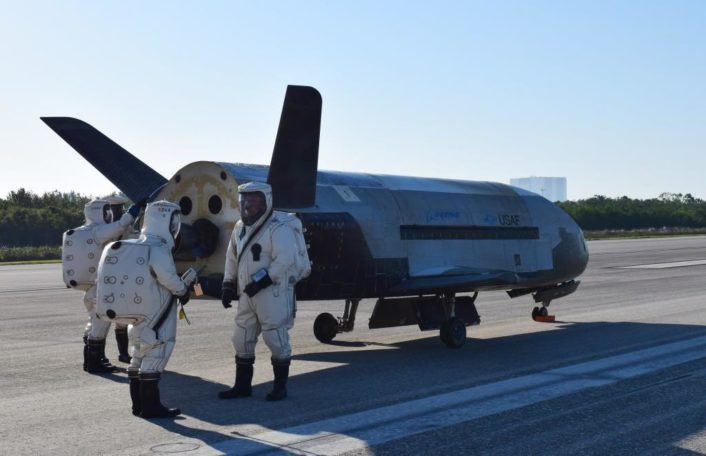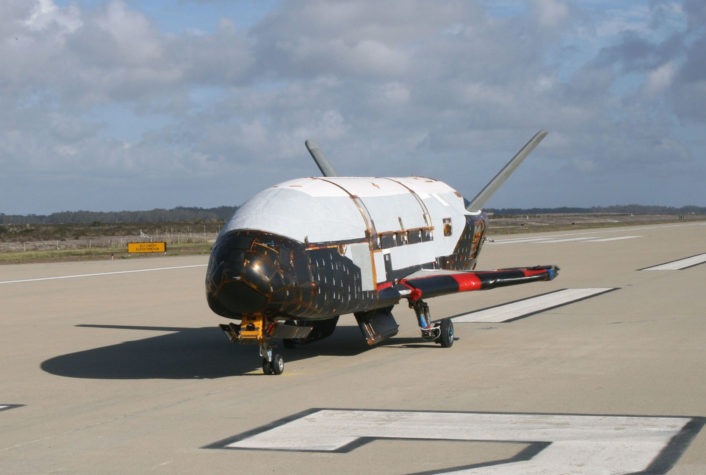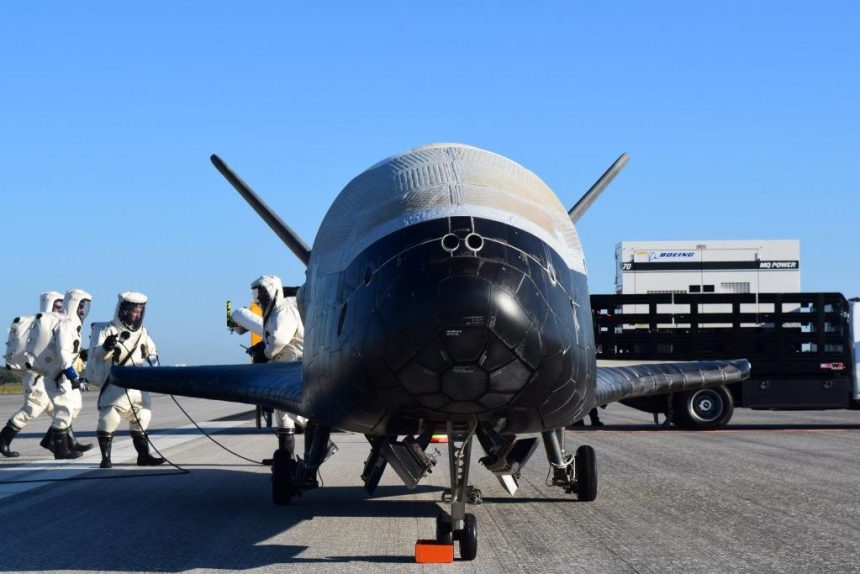Mission of Secret Space Drone Remains Unknown Following 717-Day Orbit.
The secretive U.S. Air Force Boeing X-37B orbital unmanned spacecraft has landed at the Kennedy Space Center Shuttle Landing Facility on the east coast of Florida after an extended 717-day long mission in earth orbit. The specifics of the mission and the role of the X-37B remain classified.
The spacecraft touched down on runway 15 using normal aircraft-style landing gear, similar to the now-retired manned space shuttle program. Landing time was shortly before noon UTC or about 08:00 AM local time zone in the Eastern U.S. Despite its classified mission, video of the landing has been widely publicized.

Since the first flight of the X-37B was seven years ago, on April 22, 2010, it is reasonable to suggest the program has moved beyond the developmental stage and may now be an operational project. This has created substantial speculation about what the role of the X-37B may be.
Three theories have prevailed:
The first theory is that the X-37B is a space-based weapons platform. The spacecraft is pre-deployed into orbit armed with some type of weaponized re-entry vehicle that could be released over or near a specific target. It may also be a weapons delivery vehicle deployed in defense of space-based commercial assets such as the GPS satellite constellation. This theory is debunked by most analysts.
Secondly, and most plausibly, the spacecraft may be a platform for gathering intelligence. This could include signals intelligence such as activities of communications and surveillance satellites, both civilian and military. With approximately 2,271 satellites in orbit around the earth at various altitudes performing a wide variety of functions this theory tends to be the most realistic. It may also be ground mapping radar and other surveillance mediums. Since the large internal payload bay of the X-37B, about the size of the interior of a small general aviation aircraft such as a Cessna Caravan, is interchangeable the spacecraft could be “mission adaptive”, meaning it could be reconfigured for various types of surveillance. That this last mission was so long in duration suggests the X-37B may have had a means of transmitting intelligence from space back down to earth, somehow beyond the capabilities of existing space based surveillance platforms like satellites.
Lastly, and most unlikely, the X-37B remains a research project. It could potentially be a test bed for deploying satellites and servicing them robotically in space, releasing new orbital packages into space or any number of other roles not yet performed operationally. Given the duration and investment into the program along with the operational security surrounding it this theory seems least likely. A major part of X-37B operations are administered by DARPA, the Defense Advanced Research Projects Agency, a shadowy U.S. government agency located in Arlington, Virginia.

Several techno-thriller writers have included the X-47B in their fictional story lines as both an ISR platform (intelligence, surveillance, reconnaissance) and a weapons delivery vehicle.
Whatever the role of the secret X-37B project the continuing operation of the spacecraft certainly verifies it is up to something. For the time being it remains one of many fascinating projects we are left to speculate about, which is sometimes more fun than actually knowing.









